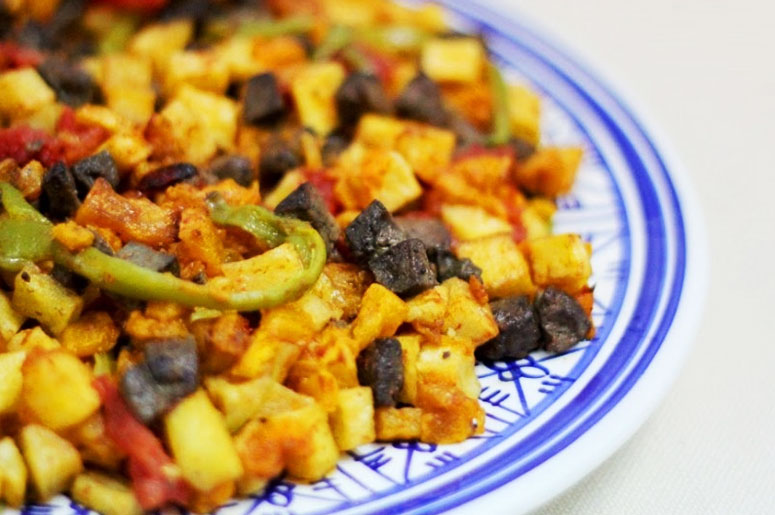People in the US just discovered the Kafteji, a traditional Tunisian preparation made with fried vegetables. But in Tunisia, Kafteji have existed since many decades and quickly became a national dish, just like Lablebi, couscous, shakshuka, etc. This dish is very similar to a traditional dish in Italy called the Ciambotta, which is very well-known in the southern Italian regions.
Throughout the years, many recipes and versions of the Tunisian Kafteji appeared like the Kafteji Tajine, Kafteji sandwich, etc. But basically, the classical recipe is made with fried vegetables (zucchinis, eggplants, potatoes, tomatoes, pumpkins…) and eventually some eggs. These vegetables are fried and then cut into small pieces. We can add a fried egg for a more pronounced taste. In Tunisia, people like eating spicy dishes, so to make the Kafteji even tastier; they add traditional or berber Harissa.
Today Kafteji is served in almost all restaurants in Tunisia with a slice of escalope or some Tunisian sausage called Merguez. The secret of success of this national Tunisian dish? Fried vegetables, spices and of course, a good dose of love!
If you want to prepare a typical Tunisian kafteji, here’s the recipe. First of all you will need these few ingredients (for 6 persons):
- 8 green peppers
- 2 potatoes
- 6 tomatoes
- 300g Pumpkin
- 6 eggs
- 1 tsp Coriander powder
- Salt and pepper
- Vegetable oil
Preparation:
- Put some vegetable oil in a pan
- Fry the green peppers then let them cool
- Peel the potatoes and cut them into small dices
- Fry the eggs
- Cut the tomatoes in two, spice with some coriander, salt and pepper and fry them
- Peel the fried peppers, deseed them then cut them into small pieces
- Peel and cut the tomatoes. For the eggs, you can leave them as they are or cut and add them to the whole mixture.
- Finally, mix all the fried vegetables and spice them. And of course, don’t forget the salt and pepper.
Your kafteji is ready to be eaten. Bon appetit !


